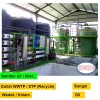Installation of Filter Press 500 LCPC : Sludge Separation in WWTP
FILTER PRESS 500 LCPC INSTALLATION

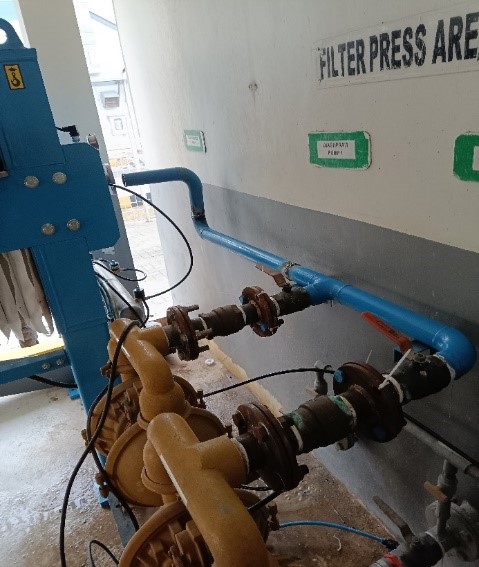


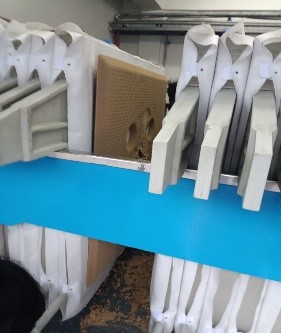
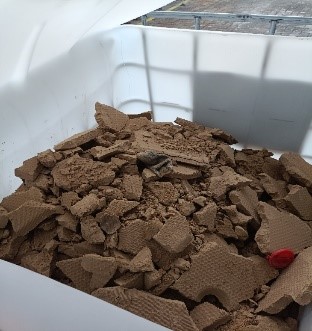
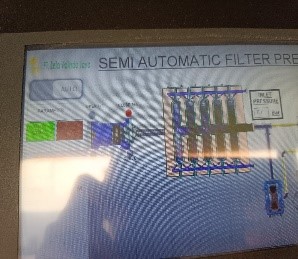

WHAT IS A FILTER PRESS AND ITS USES
A filter press is a device utilized in waste processing to separate solids from liquids. Its principle of operation involves applying pressure to a mixture of solid and liquid, known as a suspension or slurry, resulting in the physical separation of solids and liquids.
In wastewater treatment plants (WWTP) or wastewater processing, the utilization of a filter press offers the ability to reduce waste volume and eliminate excess water, thereby facilitating waste management and transportation. Furthermore, a filter press can also reduce the presence of hazardous substances in the waste before disposal, aiding in compliance with stringent environmental requirements.
The use of a filter press in waste processing is highly versatile and finds application across various industries such as chemical, mining, food processing, oil and gas, and more. By employing a filter press, companies can efficiently process their waste while maintaining an environmentally friendly approach.
FILTER PRESS COMPONENTS
Essentially, a filter press consists of a series of vertically arranged filter chamber plates positioned between two sidebars or handle grips on the left and right sides. These plates are supported by legs on both ends, which attach to the end stop plate and the subsequent end body plate that holds the hydraulic cylinder.
The filter chamber plates are primarily made of polypropylene with a high polymer content, known as PPHP. This design ensures their resistance to chemicals and the pressure applied by the pressing cylinder, making them stronger, less prone to cracking, and resistant to warping.
The body of the chamber plate comprises several parts. The head plate has one flat side and one uneven side, which serves as the filtration area. The uneven side features recessed areas, and four bumps act as separators between adjacent chamber plates. The grooved lines on the plate provide aeration for the filtrate flow, directing it towards the outlet hole.
The central hole serves as the inlet for the slurry, while the four holes act as outlets for the filtrate. The uneven recessed area is designed to collect the formed filter cake. The next plate is called the intermediate plate, which has recessed areas on both sides, a central hole, and four filtrate outlet holes. The final plate is the end plate, which is similar to the head plate with one flat side and one recessed side. However, it lacks the central and corner holes found in the other plates.
A filter cloth is used in the filter press, and its main function is to separate solids and liquids. The selection of the filter cloth should consider the physical and chemical properties of the slurry. Based on these characteristics, the appropriate type of filter cloth, including the fabric weave and thread material, is chosen. The filter cloth is attached to the chamber plate, forming an inseparable pair in the filter press.
STEP AND HOW FILTER PRESS WORK
- In the initial stage, after the chamber plates are fitted with filter cloth and arranged in a row, the inlet holes are properly connected. Then, the hydraulic cylinder is pressed forward to apply pressure on all the chamber plates. Once the desired pressure is reached, the powerpack automatically stops, and the pump is activated to introduce the slurry into the filter press through the inlet channel.
-
Gradually, the particles start filling the chamber plate cavities and get trapped in the filter cloth. Initially, the flowing filtrate may carry some fine particles that pass through the filter cloth. However, as the process continues, the fine particles that escape decrease as they are obstructed by the coarse particles forming a layer that adheres to the filter cloth.
-
Subsequently, the filtrate becomes clear as the fine particles are retained by the coarse and fine particles adhering to the filter cloth, forming a thicker layer. More and more particles get trapped in the filter cloth, resulting in increasingly clear filtrate flowing out. The particles filling the chamber plate cavities compact and conform to the relief shape of the chamber plate surface.
-
Once the filtrate flow stops or the pressure gauge indicates a high pressure, indicating the end of the process, the slurry pump is turned off or automatically stops. The next step involves drying the formed filter cake by blowing compressed air into the filter press through the outlet or inlet flow.
-
After most or all of the liquid contained in the cake has been expelled, the next process is cake discharge. The airflow from the compressor is closed, and the hydraulic cylinder is retracted. Once the hydraulic cylinder stops, the end plate is pulled back by the operator. Consequently, the formed cake falls down, and any remaining cake residue is cleaned until it is completely removed. This process repeats for subsequent cycles.
-
After all the discharging is completed, the chamber plates are repositioned as before, and the cylinder is pushed to tightly close the chamber plates. The filter press is then ready for the next cycle.
For your filter press or water and wastewater treatment needs, you can contact us at +6221 8873531. Additionally, to explore our portfolio of water treatment products and other HVAC filters, please visit our products.
You can also find our complete product catalog at www.zefatech.id. If you're looking to purchase chemical cleaning products for boilers and cooling systems, as well as HVAC filters, you can visit our Tokopedia store at www.tokopedia.com/zefavalindojaya.


